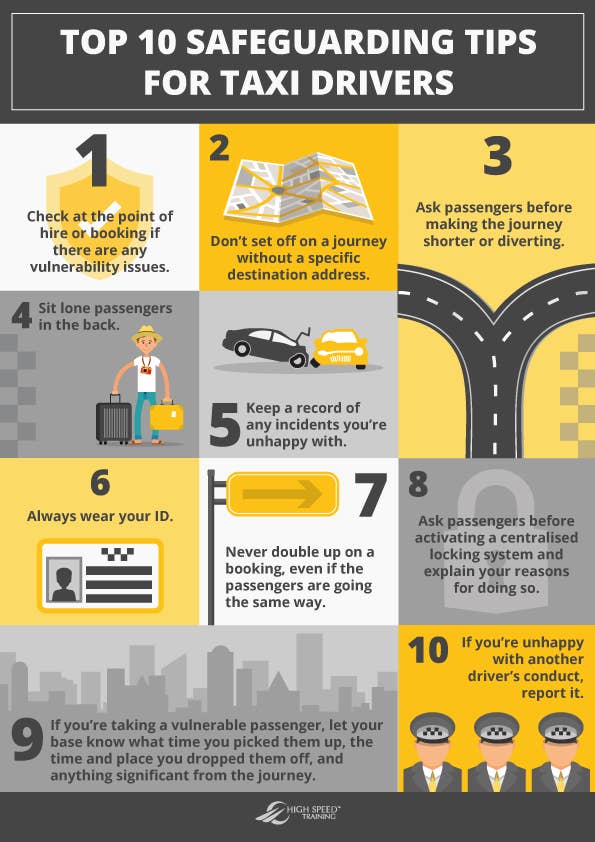Top 10 Safeguarding Tips for Taxi Drivers
If you’re a taxi driver, work in the booking office of a taxi company, or are the owner of a taxi firm, you have a responsibility to safeguard your passengers.
As a taxi driver, you have a unique reach into society. You observe and hear things that others don’t and you’re therefore more likely to notice crimes and vulnerability issues. Consequently, it’s important that you adopt good safeguarding practices to help vulnerable passengers.
This article shows the top 10 safeguarding practices, and ways you can help, so that you can ensure you are safeguarding vulnerable passengers.
10 Top Safeguarding Practices
You have a duty of care to protect your passengers. This includes following good safeguarding practices and knowing when to report if you suspect something is wrong. Our poster below shows the ten top safeguarding practices that you should always follow.

If you’d like to print this poster to use in your workplace, use the button below:
How You Can Help
If you do have concerns, there are a number of ways you can help.
For initial concerns, you should report your concerns to your manager and keep a record yourself. This should contain the following information:
- Personal details of the passenger, such as their name and age, if you know any.
- Personal characteristics, such as gender and if they had a noticeable disability.
- The date and time of the journey.
- Where you picked the passenger up from and the journey destination.
- If anybody else was in the taxi.
- Your concern.
- How your concern came about. For example, was something said or did you notice bruises?
If you believe the passenger is in immediate danger, you should contact the police on 101 or 999 immediately.
If you have concerns about a child or children, contact children’s charity NSPCC on 0808 800 5000.
What to Read Next:
- Understanding the Different Forms of Child Neglect
- Signs of Abuse in Children
- What is Safeguarding Training & Why is it so Important?
- Safeguarding for Taxi Drivers Quiz











